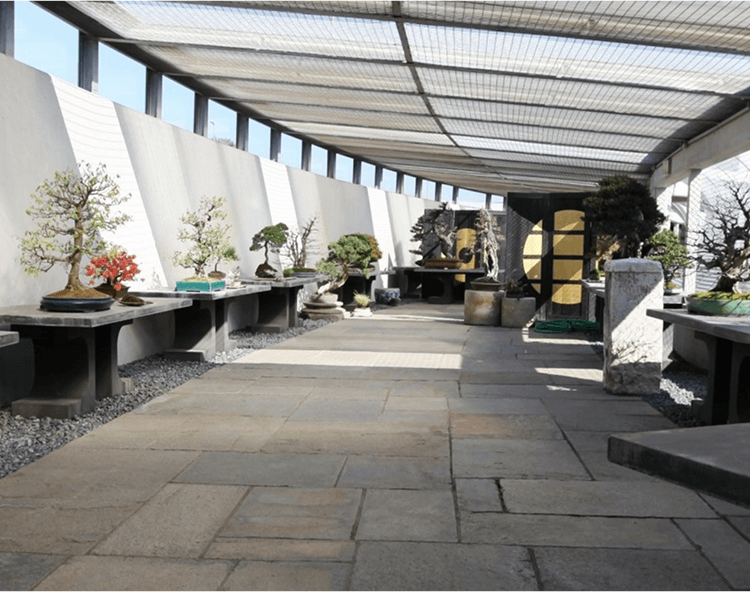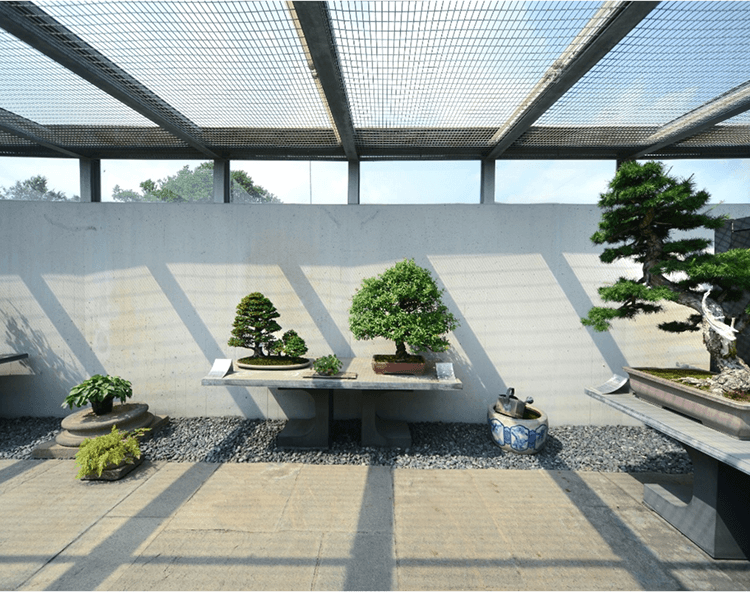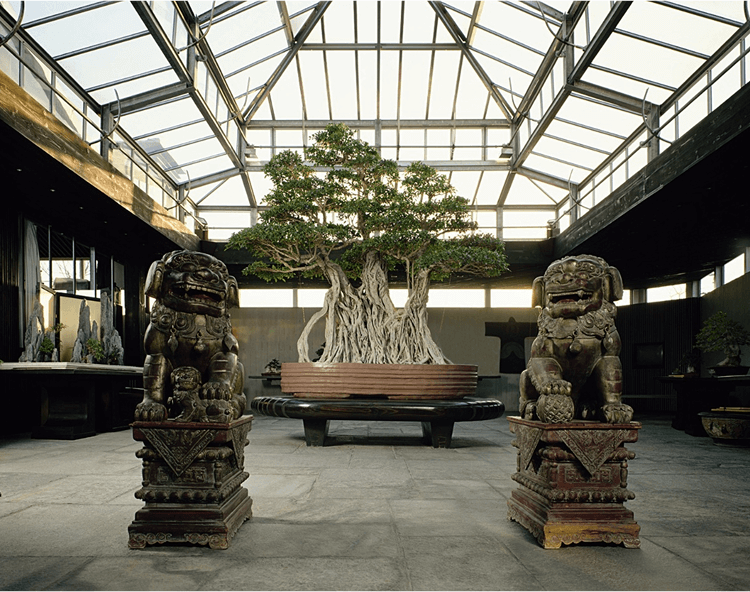CRESPI BONSAI MUSEUM
The Crespi Bonsai Museum is renowned worldwide and hosts the largest and most comprehensive collection of bonsai outside of Japan. These exceptional, unique, and rare specimens are works created by highly regarded masters of the past and present, many of which are over 100 years old. Opened on May 26, 1991, the Crespi Bonsai Museum was the world's first permanent bonsai museum.
Buy your ticket to enter the museum directly on-site or online.
Crespi Bonsai Museum
S.S. del Sempione,37 Parabiago (Mi) - Italy.
Monday: 2:30 PM - 7:00 PM
Tuesday - Saturday: 9:00 AM - 12:30 PM / 2:30 PM - 7:00 PM
Sunday: 9:00 AM - 12:30 PM
(except August)
Free for children up to 12 years old and over 70 years old. Guided tours for individuals or groups can be organized by reservation.
- Surface area: approx. 600 m2
- Materials: exposed concrete, natural Barge stone, steel, glass.
- Slate tables (external gallery) - Wooden tables (internal gallery)
- Pot room: contains both Chinese and Japanese pots
- Epochs: Qing (1644-1735), Tokugawa (1615-1868), Meiji (1868-1912)
- Tokonoma corner: recreates the display niche of the traditional Japanese house



The Crespi Bonsai collection is made up of around two hundred works that are exhibited in rotation according to the season, as each species has a better time to be exhibited. This is the most fascinating and surprising aspect of the permanent exhibition of living art at the Crespi Bonsai Museum, which changes appearance every season, taking on new colors and perfecting itself year after year, thanks to the careful attention of Luigi Crespi and the improvements made by master Nobuyuki Kajiwara, director of the museum and professor of the three-year courses at the Crespi Bonsai University. A prominent place is occupied by the reconstruction of the "toko-no-ma," the corner of the traditional Japanese home used for displaying objects with a high spiritual content. The collection is completed by precious tansu furniture and various furnishings, including antique Japanese lanterns, while outside the gallery, the eye can glide among the stones of the Zen garden created by Luigi Crespi with original materials imported from Japan. The Crespi Bonsai Museum's ever-changing collection is enriched year after year with particularly valuable masterpieces.
Although it is becoming increasingly difficult to acquire new centuries-old masterpieces, increasingly jealously guarded in Japan as symbols of traditional culture.
In recent years, Luigi Crespi has had the honor of receiving from Daizo Iwasaki, a well-known collector and honorary president of the World Bonsai Friendship Federation, owner of the Takasagoan bonsai garden, some extremely valuable specimens: two Pinus pentaphylla (one very famous and placed in a vase of exceptional value), a Taxus cuspidata, and two Juniperus chinensis Itoigawa. Since 2011, the Crespi Bonsai Museum has been part of the prestigious Grandi Giardini Italiani circuit. Among the most important and prestigious specimens: the thousand-year-old Ficus retusa Linn, arrived in Italy in 1986 after ten years of negotiations; the Ginkgo biloba, the first bonsai purchased by Luigi Crespi, more than fifty years ago and which inspired the extraordinary museum collection; the Pinus pentaphylla from Miyajima donated to the Crespi Bonsai Museum by Daizo Iwasaki in March 2009 as a sign of esteem and appreciation for the work done by Luigi Crespi in spreading the culture of bonsai in Italy and Europe; the Taxus from Mount Ishizuchi from Daizo Iwasaki's Takasagoan garden; Sageretia theezans donated by master Ng Shing Fat in 2012, who wanted to offer the Crespi Bonsai Museum six exceptional penjing specimens.

The millennial Ficus retusa Linn

Ginkgo biloba

Pinus pentaphylla of Miyajima

Taxus of the mount Ishizuchi

Liquidambar formosana


